9 Patio Wind Block Ideas (Screens, Shades & Deflectors)
Here’s our gallery of patio wind block ideas, including how to block adverse weather using a variety of creative deflecting and screening designs.
A backyard patio is a perfect oasis for a staycation. Barbecues in the summer, lunches with friends in the fall, and even an impromptu cup of coffee during a winter snow flurry make a patio an all-season gathering place.
Except for those still days, any weather disruption tends to cause windy conditions. A gentle breeze may be acceptable, but when a gust of wind scatters tableware, napkins, pillows and other deck décor, a patio windbreak is a good idea.
Many people prefer not to enclose their patio to keep the outdoor feel and enjoy the view around them. In this guide, we’ll explore patio wind block ideas so you can decide which option works the best for you.
How To Block Wind On a Patio
Blocking windy gusts in a backyard or even a balcony for an apartment allows homeowners and occupants the chance to enjoy the fresh air. However, bad weather may bring gusty winds, ending the enjoyment.
Some areas may be windy because they’re located in a valley between two mountain ranges or located on an ocean shore area. Finding easy and convenient windbreaks means much more time to enjoy a patio or balcony.
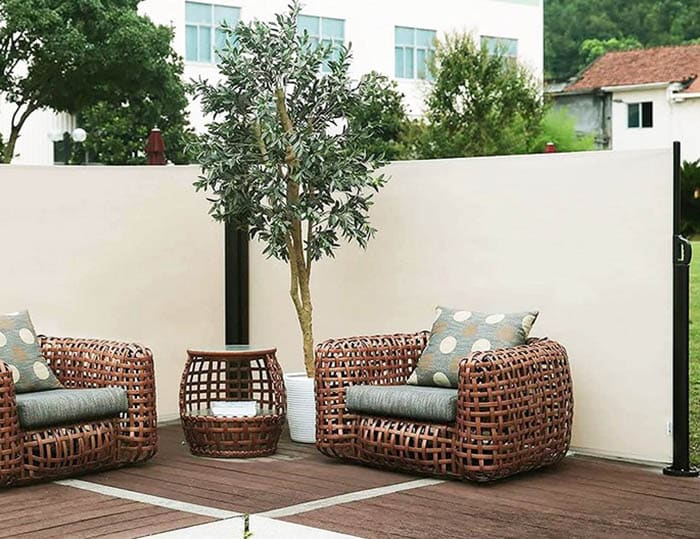
Below are several options and ideas to use for protection from the wind. Each one depends on the type of patio, the surrounding landscape, and how much protection the homeowner wants.
Wind Block Fence
Wood fence wind blocks come as panels made of wood with cutouts in a symmetrical or artsy pattern. Air and light are allowed in, but the gusty breezes are kept at bay.
A slatted fence will act as a windbreak and privacy to provide a welcoming patio spot for morning coffee. Windbreak fences are made from wood or composite wood planks, allowing plenty of colors and patterns.
Solid fences aren’t very effective as a windshield. The gusts will blow up against the solid surface and travel up and over it to drop back down on the other side. Lattice fencing, louvered fence, or bamboo all make great options for a wind protection panel fence.
Patio Wind Deflector
A patio wind deflector does not have to be attached to the flooring. Once a homeowner figures out where the windy problem is coming from, a DIY wind deflector can be erected to stop the gusts from reaching the seating area.
Fence panels can be arranged independently from other structures and prevent gusts from approaching.
Bushes such as arborvitaes grow into a large natural wall, and trees such as oaks, maples, and even pine trees work great. While these natural deflectors are growing, homeowners could use temporary hanging panels or screens for added protection.
Outdoor Wind Blocking Shades
Shades for patios make great wind blocks and add a touch of décor to the patio’s design. Different fabric choices include materials that are solid, sheer, or woven.
Windblocking shades typically come with tie-downs to prevent them from flapping in the breeze and provide an extra benefit by blocking light rain or snow flurries. See more types of patio enclosures here.
Roll Down Wind Protection
Shades can hang from simple hardware that can be taken down when not in use or installed as roll-down windscreen protection. Manufacturers offer shades made to be installed for an outside patio.
Raising or lowering the shades is done by pulleys, or the panels can be fitted with electric controls. Roll down protection provides a convenient option for when the breezes are calm.
Clear Vinyl Curtains
You’ve probably seen plenty of clear vinyl curtains used in restaurants and bars with outdoor seating. Similar to large clear tarps, these vinyl panels are waterproof and come in a variety of different sizes depending on your needs.
Clear vinyl/PVC curtains are generally resistant to UV rays and often treated with an anti-microbial coating. They are often sold in 20 mil or 30 mil thickness. A thicker curtain is advisable for anti-crack resistance for cold weather climates.

These come with grommets, so you can hand them from your patio or porch using hooks or other types of fasteners. To ensure they don’t create too much noise and stay secure they should be attached at the top and bottom.
The cost to purchase clear vinyl curtains is relatively inexpensive at around $75 to $100 for an 8ft by 8ft panel.
Plexiglass & Glass Wind Barriers
A patio may face the beach and ocean or provide a gorgeous mountain view. In that case, it may not be a good idea to use a windbreak that interrupts the scenery even by a small amount, such as screens.
Clear glass or plexiglass panels offer a windbreak as long as they are high enough to keep the gusts from settling back down onto the patio. If the glass or plexiglass panels run from the floor to the top of a roofline, the winds will be directed over the roof and away from the outdoor furniture.
Portable Wind Block
A portable wind block is a temporary option typically made from panels covered with different materials.
These panels commonly snap onto a patio’s frame. Materials that work well include screen, sheer fabric, cotton, burlap, or protection from harsh weather, such as clear plastic.
Freestanding portable wind deflectors work well and can be arranged to divert gusts from any direction of the patio. Homeowners can use creative materials to complement the patio décor.
Deck Wind Screen
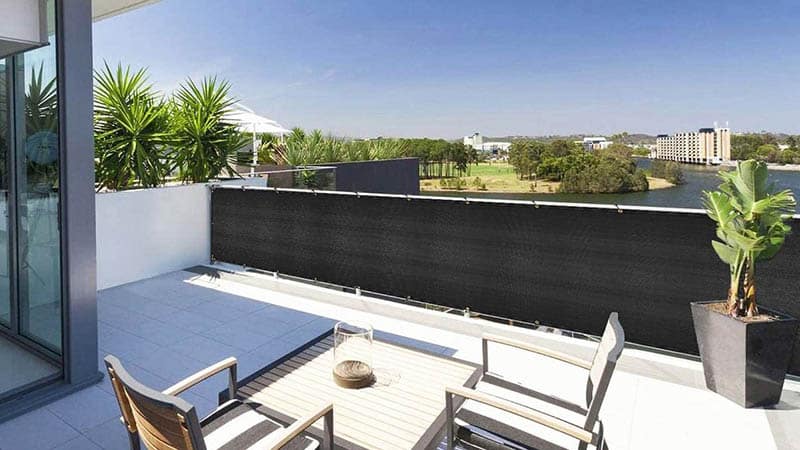
A deck windscreen is combined using the existing wood or metal railing frames and covered with strong netting material. Screening can be run around the entire patio or just the sides that typically experience wind gusts.
Wind barrier fences also double as a privacy screen, depending on the type of screen used. Manufacturers offer options for windscreens providing choices such as color, thickness, material, UV-resistant material, and privacy screen.
Deck windscreens are one of the most affordable types of patio windblocks.
Natural Wind Blockers
Plants and trees are a great way to make use of a natural wind blocker. Shrubs planted around the patio create a beautiful sitting area hedge that creates privacy.
To maximize views, keep them trimmed at about three to four feet high so they don’t block the view but shield the backyard against strong winds. Hedges provide a classic look to the landscaping.
Tall grasses or bamboo act as a barrier on windy days and create a tropical theme for homes located in warm climates.
If the patio is framed, trellises with vining plants make a gorgeous addition to the landscaping, and by using a trellis, plants can be made to grow across open areas to minimize the gusts.
Another decorative option is to use large planters with tall plants placed around the perimeter of the patio. Tall grasses with multi-level flowering plants make a dramatic statement and cut down on winds.
Trees that are native to an area make beautiful additions to any yard, help keep the air clean, and slow down strong winds. Planting a row of conifers such as a blue spruce or tamarack tree creates a sturdy, natural enclosed patio wall that welcomes a host of birds and wildlife.
What are your favorite patio wind block ideas? Let us know below in the comments to share. Read about more types of patios on this page.

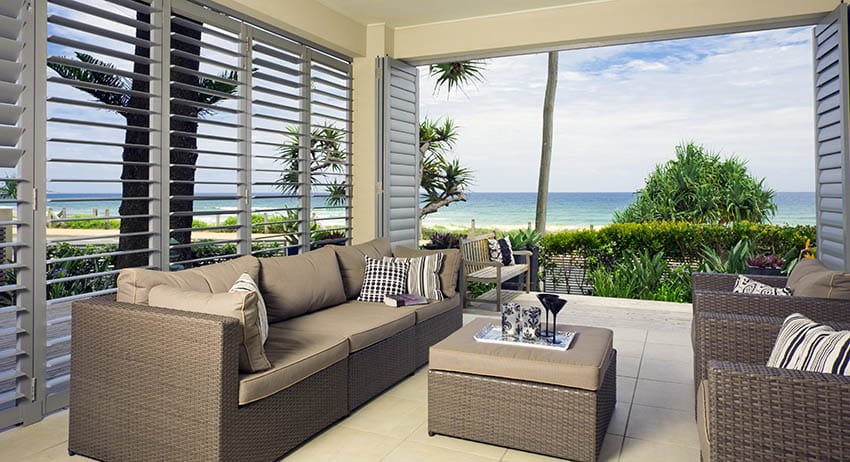
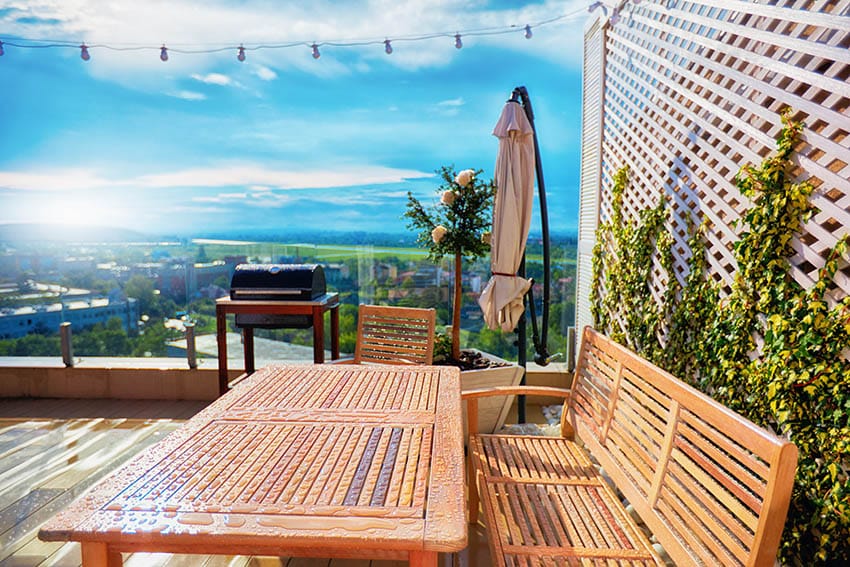
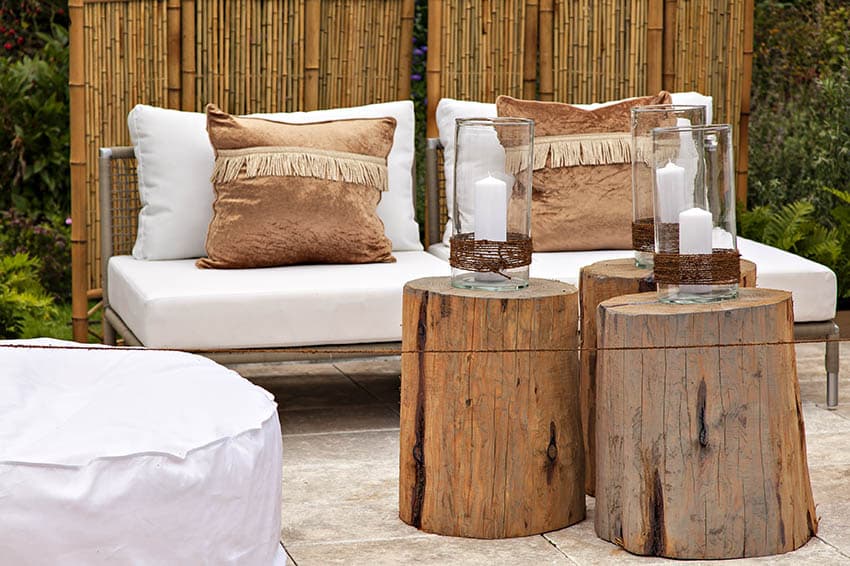
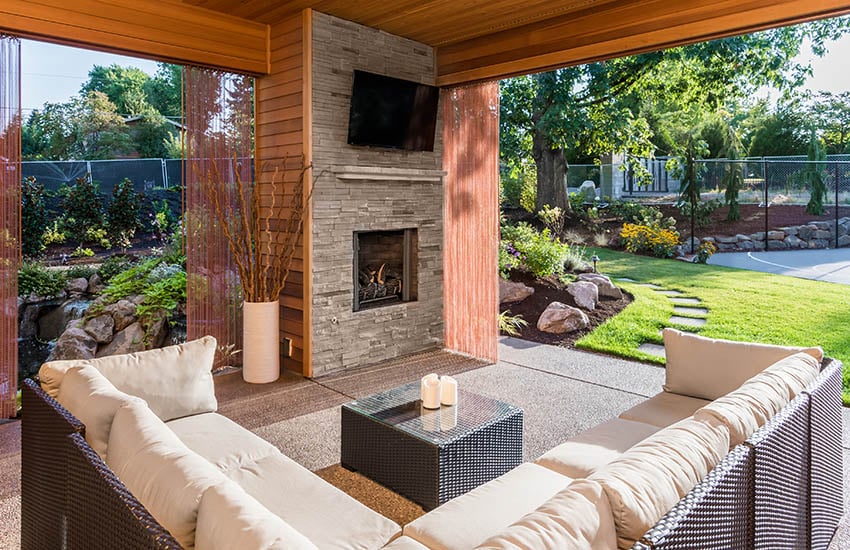
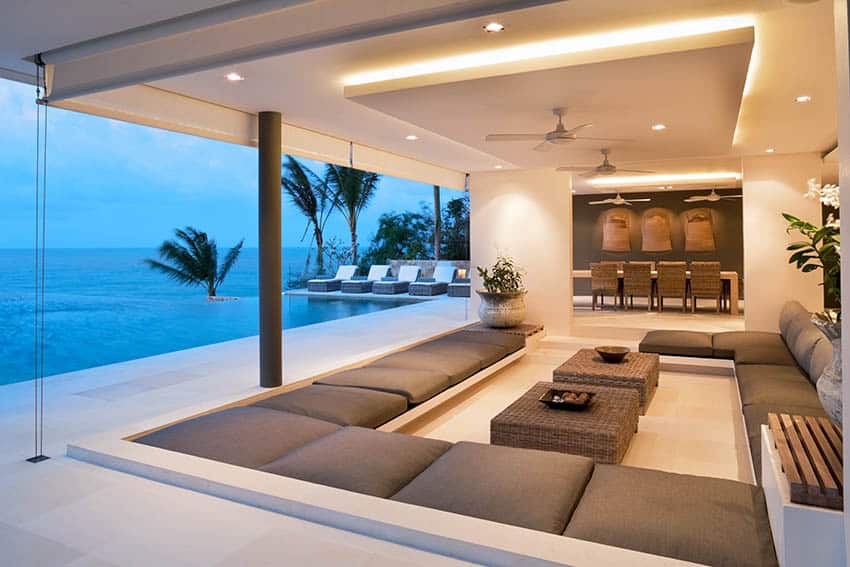
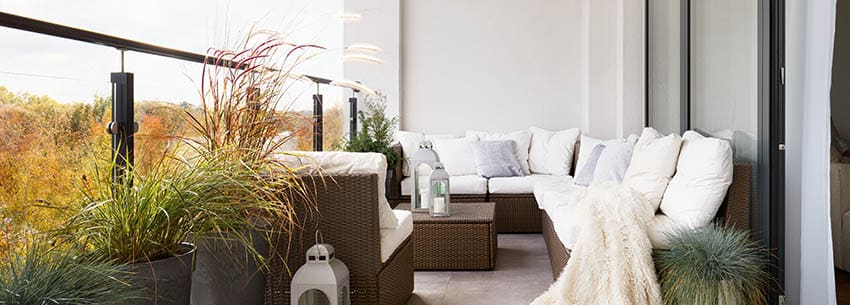

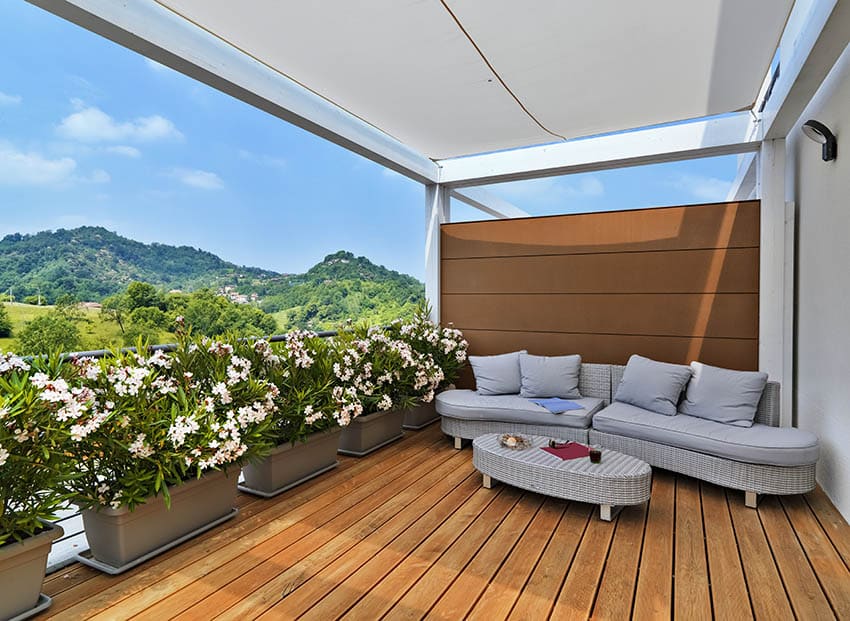
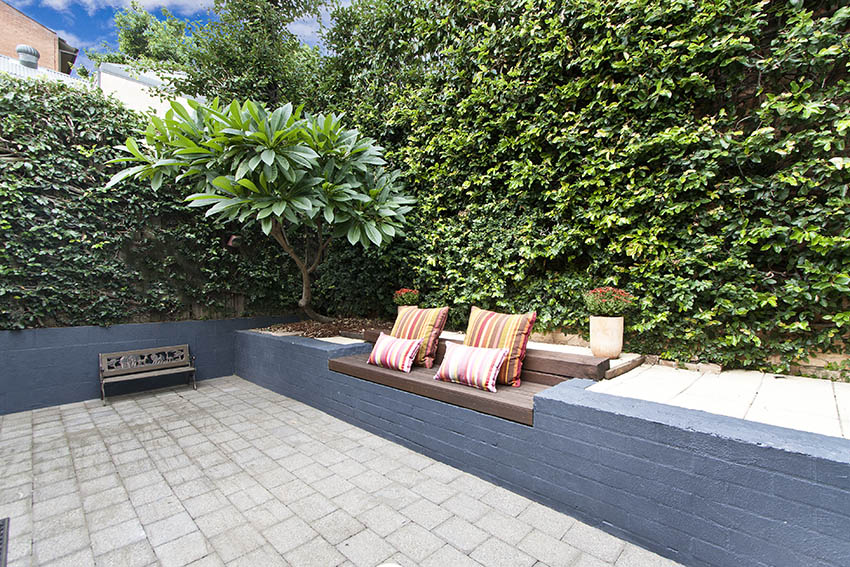


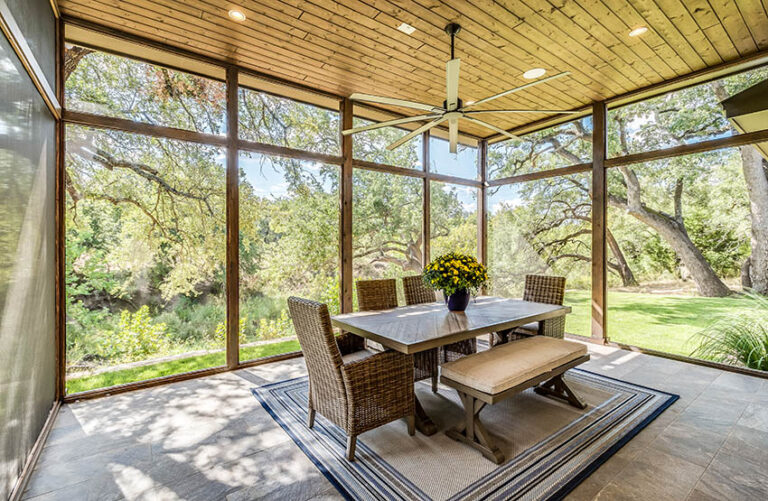
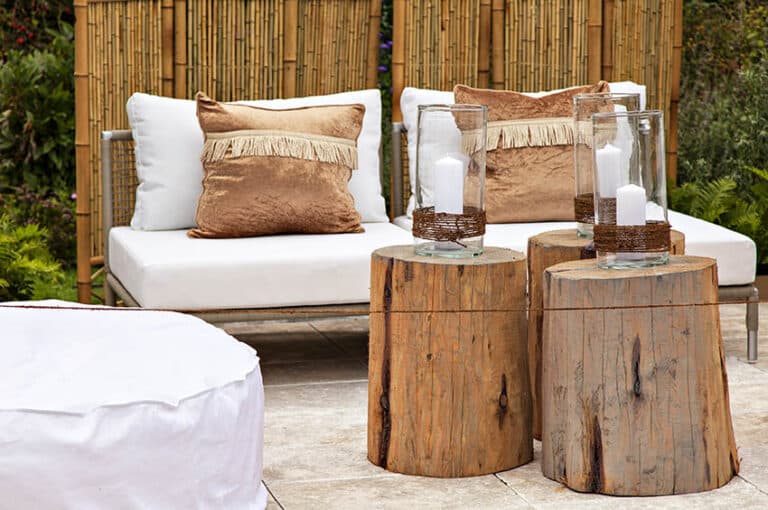

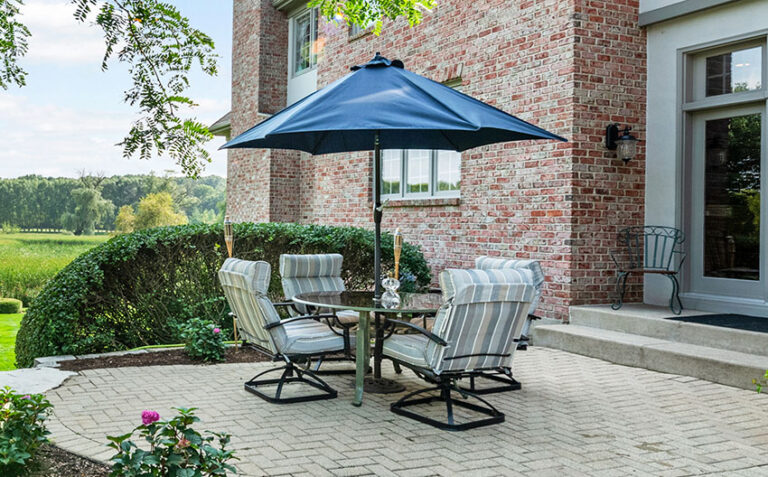
I’ve been looking for a way to block the wind on my homes balcony. I like the idea of using bamboo screens because I think they look pretty good and they seem inexpensive compared to installing glass or planter boxes which would take away from my available space.
I bought some of those roll down bamboo shades for my patio but little pieces of bamboo keep breaking off at the ends. They are good for stopping wind and adding privacy. Im just not loving them as they are starting to fall apart.
I came here looking to see if there were other options for my patio. Last year I bought a few of those clear plastic tarps with grommets for my patio. At first I tried attaching them with hooks but after a big wind they would come loose in places and start to rattle. I ended up buying a large package of zip ties and cinching them down which worked good for a while until a storm came through and ripped a big hole in the side. I may try buying some of these again with a thicker mil to prevent tearing under high wind conditions.
When it is really windy, the tarps should be rolled up so they don’t become essentially a sail which could cause substantial damage not only to the tap but other furniture and structure.
Why wouldn’t you just use potted plants for patio wind blocking? Potted plants are perfect because they are beautiful [unlike lattice fences which I think look horrible] and they are inexpensive to grow. My guess is that shrubs can block about 50% of the wind on a patio. Rows of evergreen trees should be better and block about 70% of the wind.
I can’t because the wind blows my potted plants over and sometimes right out of the pot!